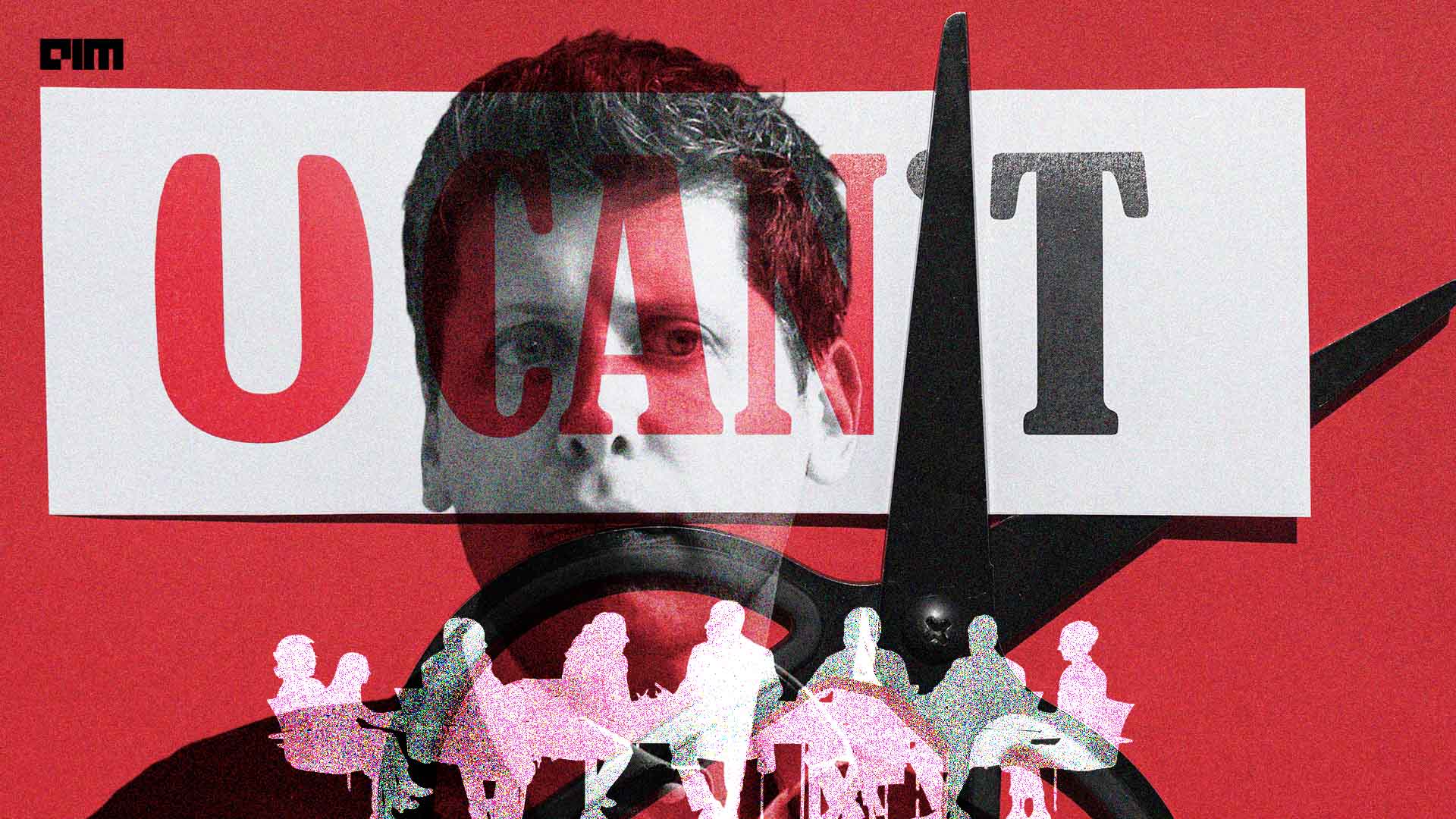
While we are still trying to wrap our heads around the recent OpenAI drama, the board has and still is the decision-maker in the whole scenario. Despite holding a position as a board member, the ease with which Sam Altman was ousted was facilitated by a peculiar board structure crafted by OpenAI- and going by the motive for that structure, Altman’s firing is justified.
While the latest development speaks about the tussle ensuing between Altman and the independent board members, the situation that led to this state is solely attributable to the not-for-profit board that holds authority over everyone.

It is almost ominous that Altman knew he is not immune to firing and even spoke about it in a Bloomberg interview a few months ago, where he said that the board can fire him and he believed that the board “needs to be democratised to include all of humanity.”
With the current structure of the board, any conflict that happens against the motive of the non-profit wing can lead to drastic measures which raises the question of what went wrong or what the board saw that was against the interest of the company. With the vision of rapid growth and AGI focus, safety became a topic of contention. It is possible that the steps to achieve this conflicted with the board’s vision, which automatically puts the CEO under fire. Furthermore, the complex board structure made the removal process effortless.
The Complex Board
OpenAI, which started as a non-profit AI research company in 2015 with the goal of advancing digital intelligence to benefit humanity without the need to generate a financial return, created an OpenAI LP, a capped-profit company in 2019. The vision of this company was to build safe AGI for the world, and believed that the capped-profit format would allow them to rapidly increase their investments in compute and talent.
OpenAI LP was structured in a way that allows it to attract funding with the promise of capped financial return for investors and employees. The company’s capped-profit approach limited first round investors to a maximum profit of 100 times their initial investment (100x). Furthermore, any excess value generated will go back to the nonprofit entity to support its mission-driven goals. However, all of this is controlled by one board irrespective of the profit motive.

OpenAI Structure. Source: Substack (Chamath Palihapitiya)
Supreme Board Power
OpenAI’s board of directors sits right at the top of the structure that controls both the nonprofit and for-profit bodies. The ‘capped profit’ company (OpenAI Global LLC) controls ChatGPT in which Microsoft has invested billions of dollars. Interestingly, the company has built a structure where the nonprofit wing takes precedence over any obligation to generate a profit. It is also fair to say that OpenAIGlobal has no control over itself, rather controlled by other entities. The unique hierarchy also limited investors’ say in the running of the company as their contribution also lies towards the bottom of the structure.
In Altman’s ousting episode, there was a bigger catch. Though Altman was part of the board, and had initially invested in the company via YCombinator, he had zero equity in the company – something he had confessed in the AI Senate and even joked about after his firing.

Having no equity in the company also meant that he has no separate power to influence the board in the likelihood of something going wrong. Altman’s commitment to OpenAI, ‘doing what he loves’, pretty much did nothing to secure his position there. While there are options such as dual-class share structures that can secure founders from being ousted from their companies (except for actions such as fraud, misbehaviour, and grave issues), none of this was implemented at OpenAI.
It is also possible that the accelerated growth that OpenAI witnessed from last November with the launch of ChatGPT was unexpected. As Altman himself had mentioned long ago, the company did not expect this kind of growth when they launched ChatGPT, which could also possibly hint at why there was no planning or restructuring of the board. For instance, Microsoft who has invested billions of dollars into OpenAI has no board seat.
The Inevitable Move
While the reason for ousting Altman was attributed to him not being candid with the board, thereby hindering their ability to exercise responsibilities, the decision was delivered by four members from the 6-member board. Out of the four, only Ilya Sutskever was a cofounder and the other three were independent directors with no equity and minimal experience in corporate governance. Pretty much, hinting at how the OpenAI board structure was faulty from the beginning.
While many questions remain unanswered, a weak board structure toppled the biggest AI company in the world and even put the fate of the company at risk. An expensive lesson in corporate governance.
The post Why OpenAI Did The Right Thing by Firing Sam Altman appeared first on Analytics India Magazine.